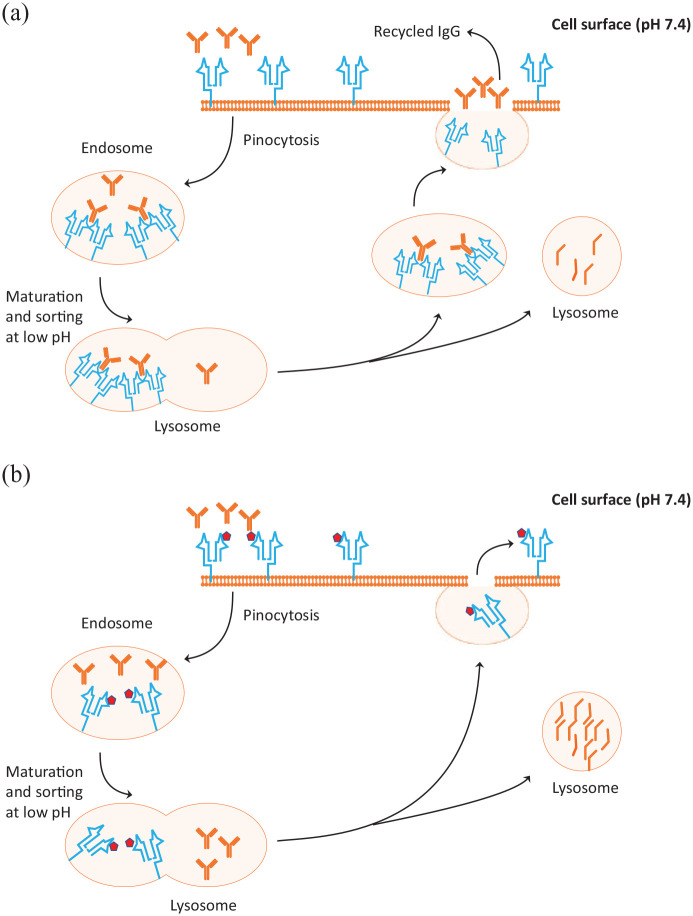Figure 1.
Mechanism of action of the neonatal Fc receptor (FcRn) in protecting IgG from degradation (A) and enhancement of IgG catabolism by FcRn inhibitors (B). (A) When IgG molecules are ingested by pinocytosis, the pinocytic vesicles fuse with endosomes, which during their maturation become increasingly acidic, allowing binding of IgG with FcRn (shown in blue) sorting out what is not bound. The IgGs bound to FcRn are then retained and recycled to the cell surface where they are released to the circulation by exocytosis. The excess unbound IgGs enter the lysosomes for degradation. (B) FcRn inhibitors are monoclonal antibodies (projected in dark red cubes) engineered to increase binding to FcRn at neutral and acidic pH. When this happens, the ingested IgGs cannot bind to FcRn and remain unbound entering the lysosomes where they are degraded. The process results in reduced IgG levels in the circulation with reduction of IgG including the pathogenic IgG antibodies.
IgG: 
FcRn: 
FcRn inhibitor: 

